THIS POST MAY CONTAIN AFFILIATE LINKS. PLEASE SEE MY DISCLOSURE FOR MORE INFO.
This it titled “Planes, Trains, and Shoe Leather” because that is basically the three forms of transportation we used on our recent trip to Europe. To learn a little more of how I accumulated travel rewards that I used to “pay” for parts of this trip, read this post, “Credit Card Rewards: A Beginner’s Guide.”
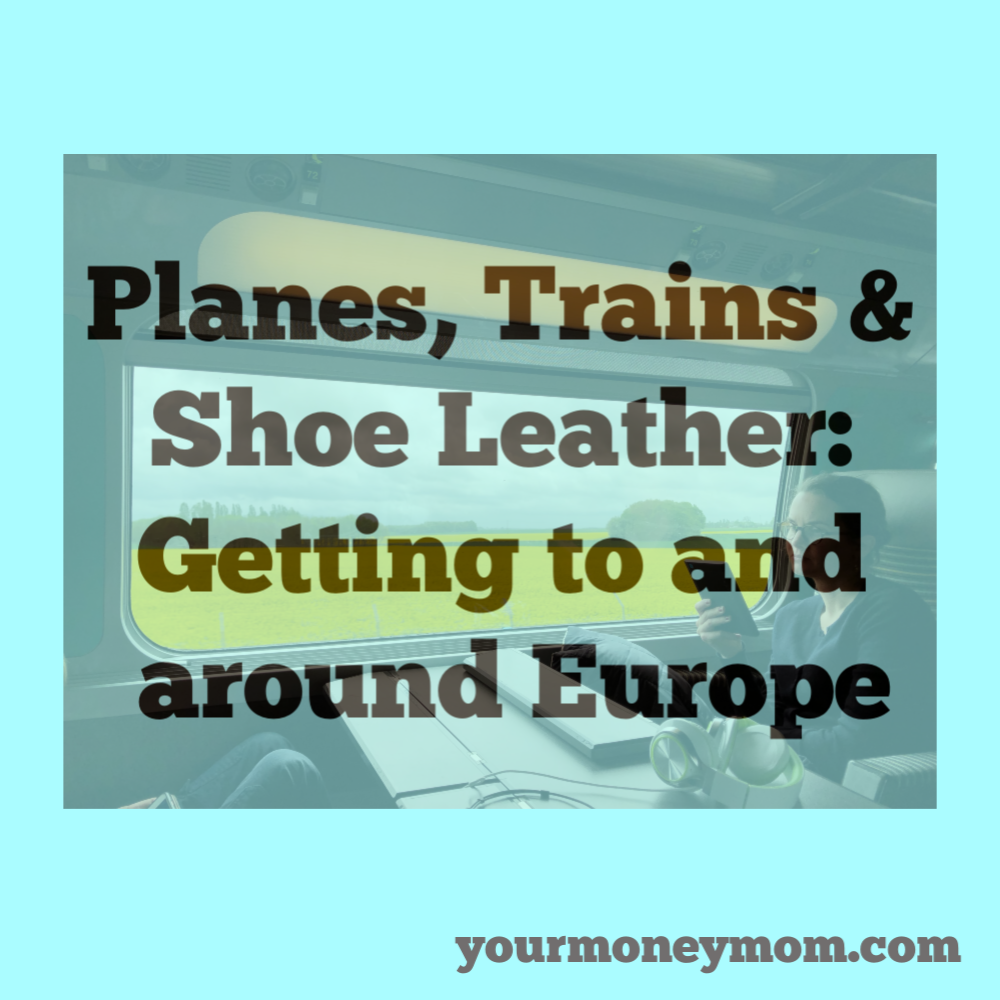
Getting There (and Back)
Airlines
In recent years, we have flown on Norwegian Airlines. I have found their flights convenient and comfortable.
Unfortunately, coming home from this trip we had a less than ideal flying experience, as we were moved to a different airline without notice. I would still fly Norwegian again, so I’m not going to go into all the details about how it all happened. I will probably write up our experience in a future post. One takeaway for me is to double check all the details. Also I will make sure that we have downloaded things to read, listen to, and watch, a must-have on the to-from European flights. Most airlines have extensive free video and audio selections on a seat-back video screen, but if you end up on an airline without that and none of your own diversions, it could feel like a too-long journey.
Norwegian flies to a lot of destinations in Europe, especially if you start on the US East Coast, but from Chicago O’Hare, our closest international airport, the only nonstop destination is to London Gatwick. But it’s an easy train ride from Gatwick to central London, and Gatwick also offers many, many flights to other destinations in Europe. It’s a great starting point.
specific tips for booking on Norwegian Airlines
Some of my tips on booking Norwegian (many of these are also true on any international flight):
*book several months in advance for best rates & seats.
*book on the UK Norwegian website. It will still be in English, but saved me more than $50 per flight, one way, per person. I’m not sure why that is, but it has been true for every Norwegian trip I’ve taken.
*book LowFare+. This offers meals, seat reservation (vital—getting an aisle or window is alone worth the price), and 1 checked bag. The lowest price is only about $60 less than the LowFare+.
*if you book early enough, sometimes the premium seats can be surprisingly low, and they are nearly lie flat and very comfortable. I would splurge on that for going over to Europe, as you want to maximize your ability to sleep.
*book each way separately, so one transaction would be US-Europe, and a second . It doesn’t add to the price at all, and offers maximum flexibility in case you need to change your details either way. You wouldn’t have to cancel an entire trip, just the one leg.
Other ways that I have purchased inexpensive tickets to/from Europe include Aer Lingus (and it seems like a cliche, but it’s delightful how nice the Aer Lingus flight attendants are, being Irish and all). I’ve also purchased tickets after searching on Orbitz.com, and was able to book a last-minute trip very cheaply there.
To check bags or not to check bags?
I know Rick Steves and others (including many of my friends) try to travel without checking bags, but I really prefer to have the extra space.
For instance, when I went to France on this trip, I brought gifts (books and some special items) for my daughter’s host family, and then I had room in my checked bag for gifts or treats to bring home. My bag was pretty full on the way there, then by the time we went home it was also pretty full. That flexibility is worth it to me.
The bag I checked through is actually a carry-on that I got from Costco, but I don’t see that it is currently available.
The best purchase I’ve made in the last year related to travel is packing cubes , which are mesh zippered bags to organize, compress, and store your clothes gear. They helped us stay organized and fit more in than I thought possible. I’m sure everyone else already knows about them, but they are a revelation to me!
Getting Around in Europe
I was on this trip to meet one of my daughters. She had been spending several months living with a family in France. To get to her family, I used points travel to fly to NYC for free, then took Norwegian direct to Paris. I then took a flight on Air France to Bordeaux.
The Paris-Bordeaux flight was about the same price as taking the train. While I generally prefer the train, the flight saved a lot of time. AirFrance also is part of the SkyTeam alliance, which offers great value in using points for tickets.
The next day, we went back to Paris on SNCF, the French state-owned railway company. The French trains are well-run, comfortable, and relatively inexpensive. Our train was the TGV (which means “very fast train”). That took us directly to Paris Montparnasse, one of the major train stations.

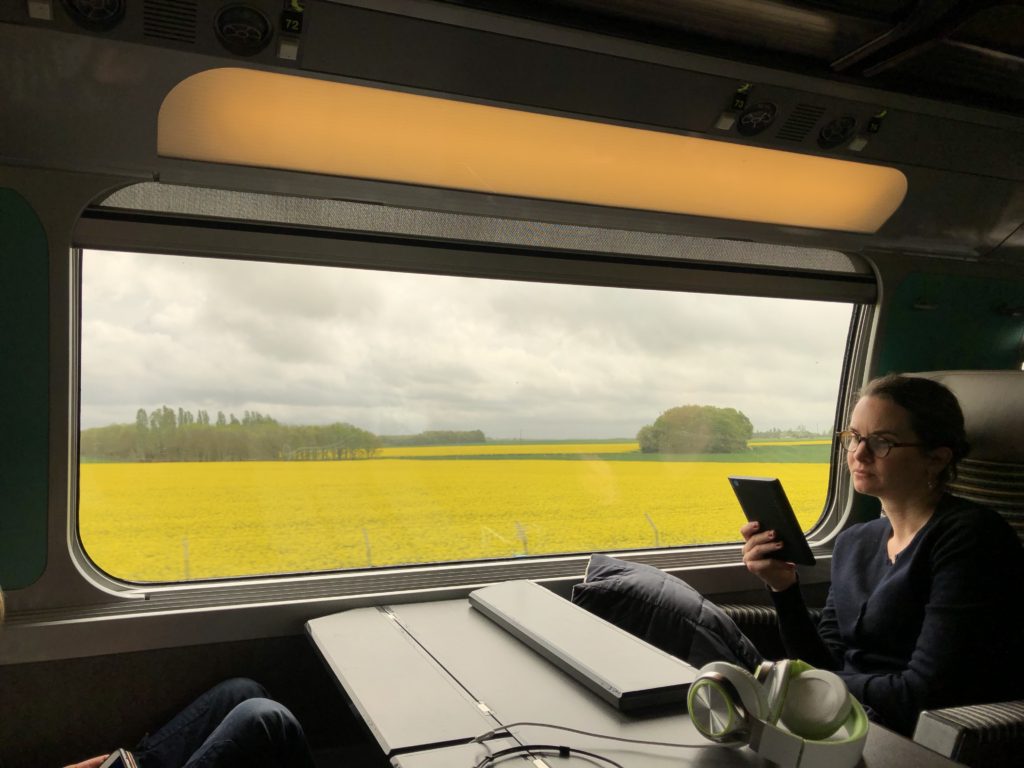
why not rent a car?
I have never rented a car in Europe. I know people who have, particularly in Ireland and other destinations. But we have just found it easy enough to get around by train.
This is one of the great benefits of traveling there, and also a lot of fun. What I love best about it is that once you’re on the train, no one in your travel group needs to do any more work. All of you can just enjoy the ride, relax, nap, etc.
Getting around Paris
Next, we took the Metro—Paris’s subway system—to our hotel near the Eiffel Tower.
I did a lot of research on the most economical way to get around on the Metro. For our three days there, it made the most sense to get a packet of 10 tickets when we needed them.
We didn’t use Uber or cabs at all. I just prefer to walk when we can, because you get a feel for the city, as well as steps on your Fitbit! Our first day in Paris we had more than 30,000 steps.
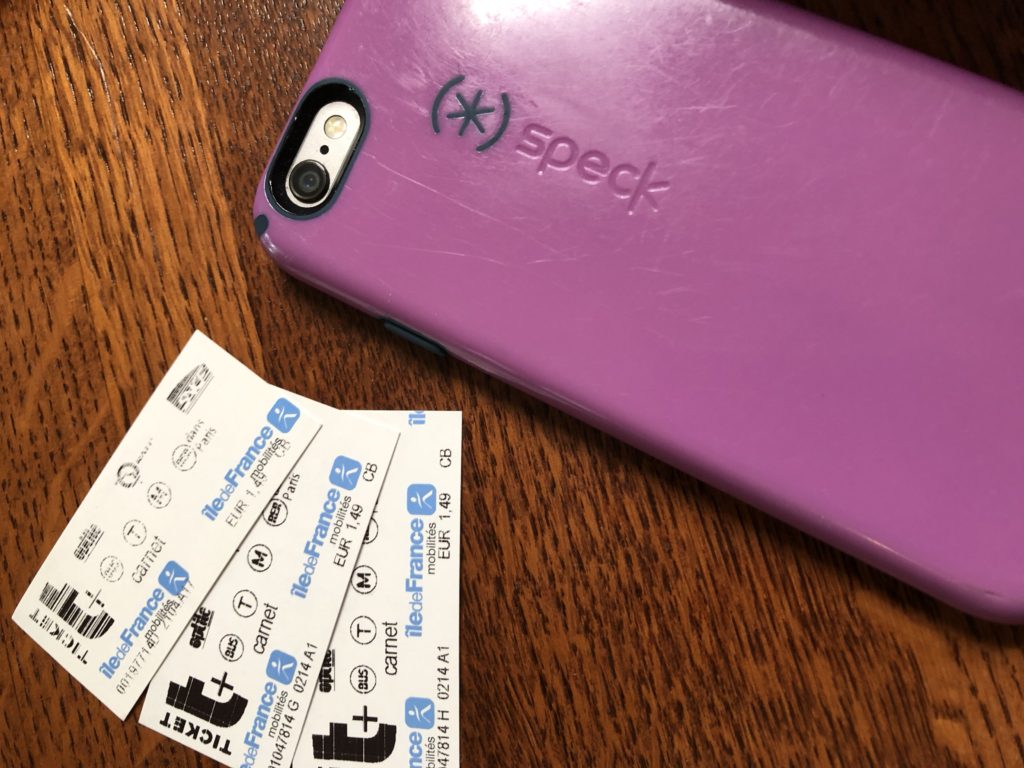
A packet of 10 tickets was 10 Euro, a savings from the 1.80 Euro price per ticket. We needed three sets (total of around $35) of those between the two of us, and I had a few left over. I’ll give them a friend for her mother-daughter trip to Paris this summer. We used them chiefly on the Metro, but did use them on a bus once. These tickets worked in the center of Paris, the vast majority of places that we were going to go. For more of the other options, like a daily pass, here’s more information about traveling on public transport in Paris.
We also took the SNCF train from Paris-Lisieux, and stayed in Lisieux two nights. In retrospect we could have easily done this trip as a day trip from Paris. However, I wanted to make sure that we got to see all the sights we wanted to there. If I were doing it again, I would have definitely organized Lisieux as a day trip. I would have also probably booked a one-day bus trip to the Normandy D-Day beaches or somewhere similar.
Taking the Eurostar from Paris-London
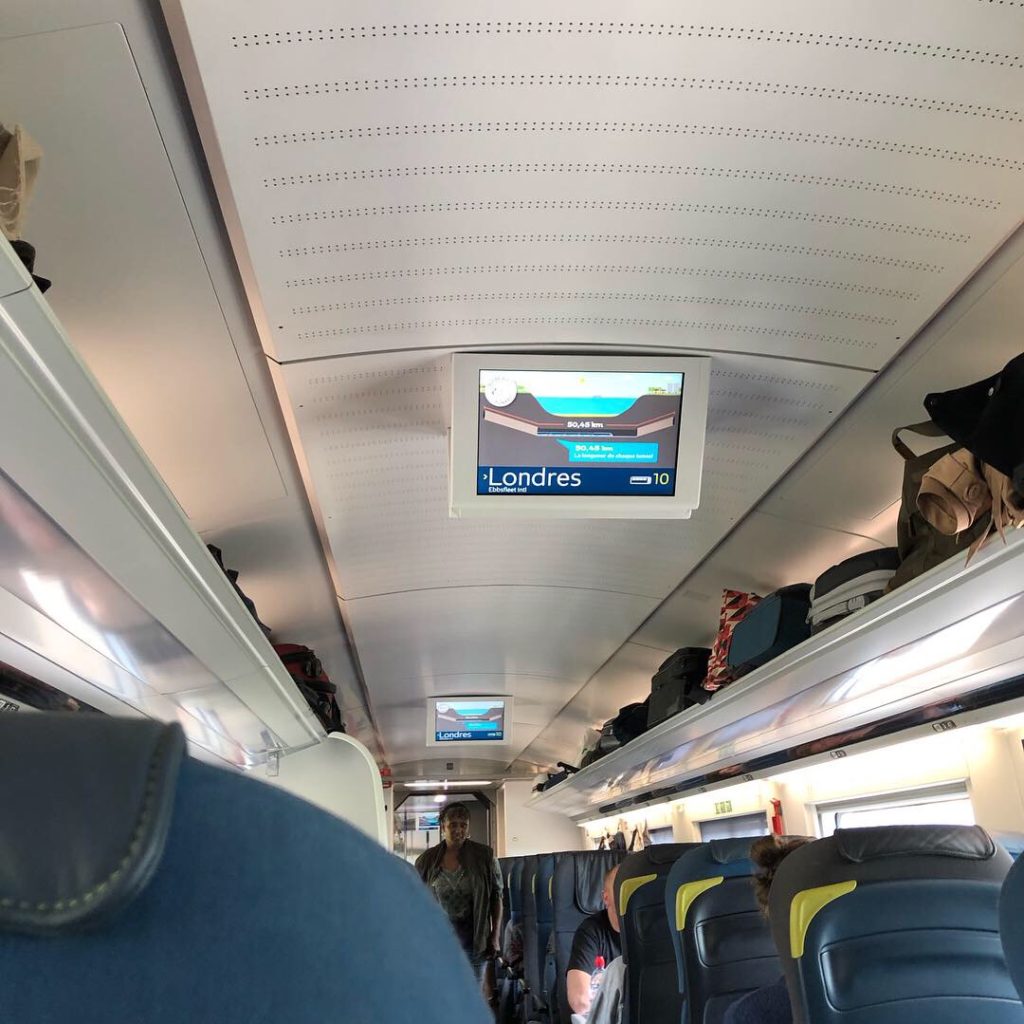
After our time in France, we took the Eurostar from Paris (Gare du Nord) to London (St. Pancras). I know and I’ve heard from loads of people, that it is far cheaper to fly from Paris-London. However, it is much easier and more comfortable to take a train than a plane, and the Chunnel is just as fast.
Also, the Eurostar puts you right in the middle of London, at St. Pancras station. It’s super easy from there to get wherever you want, and you don’t have to take the train or other transport (costing both time and money) . Plus , St. Pancras is adjacent to King’s Cross station, where you can go visit Platform 9 3/4 while you’re nearby.
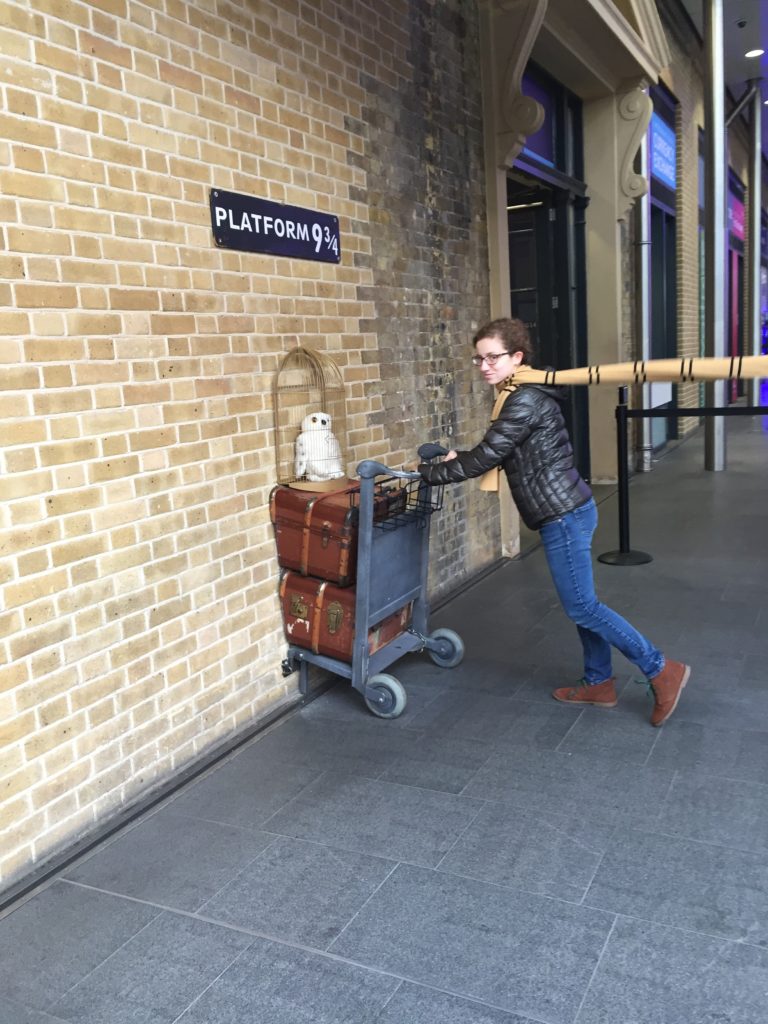
and includes borrowing your choice of house scarf.
(This is a photo from several years ago).
Getting around London
When we arrived at St. Pancras, we immediately went to get our Oyster Cards.
I was sort of annoyed that I hadn’t found our Oyster cards, until I realized that we had borrowed ours from a local friend last time. Ha! Now, we have our own.
An Oyster card costs 5 GBP (about $6.50), and then you have to load money onto it for “Tube” or bus trips on London public transport. The Oyster card is stiff, like a heavy credit card, so it won’t get worn out, and you can re-use it on future trips, or let others use yours. (If you know me locally, I’d be happy to let you borrow ours). I put ours away with our travel items (for instance, our adaptor plugs) so that we would be able to easily find them next trip.
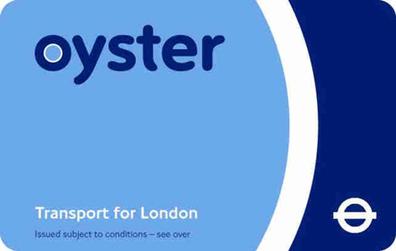
My records show that we used about $90 of Oyster credit (including the 5 GPB fee for both), so $45 each, for the four days that we were in London. That includes travel the last day to Gatwick Airport (which by itself is about $15).
Again, we didn’t use Uber or cabs at all, and we walked as much as possible. For any future trips, we won’t have to pay for the actual Oyster card, or the value–maybe $5 or so per ticket– that’s currently on there.
We also took a Southern Railway train part of one day to visit Chawton and the house museum of Jane Austen. This was probably in my top five of favorite memories from the trip.
Our tickets to the Jane Austen museum are good for one year. If any readers feels inspired by this account to make a trip before May 2020, I would be happy to go along, or lead a trip. Anyone care to join in?
Shoe Leather for the Win
Apart from these modes of travel, the way we got around was walked, and walked, and walked.
Not surprisingly, one of my must-haves for travel is comfortable walking shoes.
On this trip, I took three pair of shoes with me. They all worked well for days of serious walking. I rotated between them depending on what I was wearing or the weather.
Here are my shoes (or similar, as noted):
- one pair of very comfortable (for me) running shoes. These are my current running shoes.
- Naot Mary Janes that I purchased pre-owned on eBay to test out if they were a comfortable brand for me. (these are similar). I really liked these Naots, and the next time I need a new pair, I may splurge and get them brand new.
- Skechers ballet flats that I had purchased several years ago at TJ Maxx. (these ones are very similar). Skechers are very durable, comfortable shoes to wear all day long.
After this account of all our modes of travel, tell me about yours. If you’ve traveled in Europe, what’s your favorite airline to get there? What’s your favorite way to get around?
Next, I’ll cover where we stayed on our trip, honest reviews on the places we stayed, and why I don’t use AirBnB.

